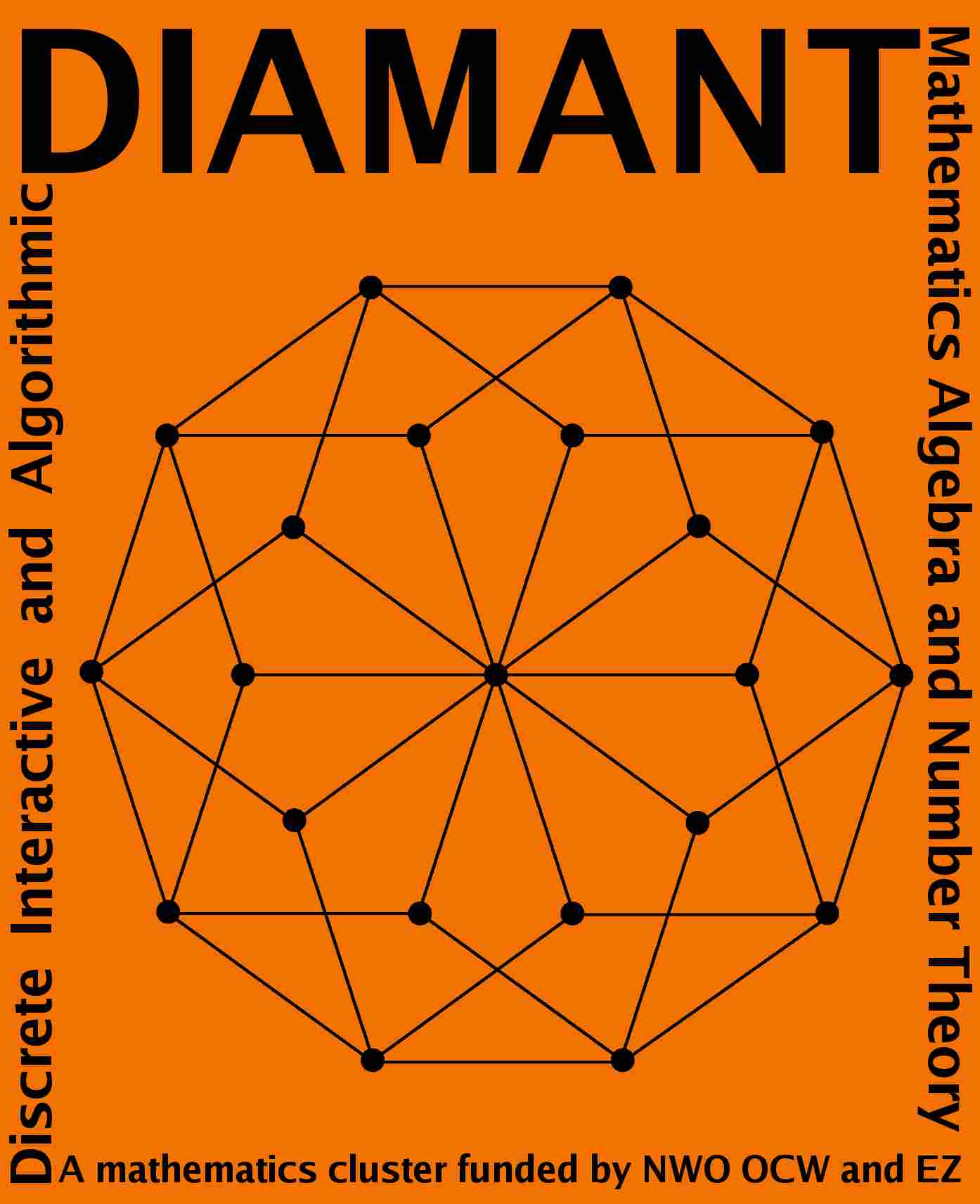

| 10:45-11:00 | Coffee/Tea | |
| 11:00-11:50 | Bernd Souvignier (Nijmegen) | A mathematicians view of crystallographic groups |
|
The symmetry principle plays an important role in the natural sciences.
In crystallography, it is usually applied via properties of crystallographic
space groups.
Abstractly, space groups can be regarded as extensions of a translation lattice by a (finite) factor group and viewing them as being built from these two parts has proven to be a very fruitful perspective, since both lattices and finite groups can be dealt with by powerful (algorithmic) methods. The opposite task of composing a space group from a lattice and a finite group concerns cohomology theory, but can be brought back to linear algebra via group presentations. In this talk, it will be demonstrated that the scope of the described group-extension approach reaches far beyond the classical crystallographic groups, e.g. to higher dimensions and to generalizations like subperiodic groups or black-and-white groups. |
||
| 12:00-12:50 | Jeanine Daems (Leiden) | History of mathematical crystallography |
|
From the 19th century onward, many developments took place in mathematical
crystallography, including work of Frankenheim, Hessel, Bravais, and,
around 1890, the discoveries of Fedorov and Schoenflies of the 230
crystallographic groups in 3 dimensions.
The first part of the 18th Hilbert problem dealt with crystallographic groups, and it was solved by Bieberbach in 1910. In 1946, Zassenhaus found an algorithm for counting these groups in any dimension, which was implemented in the 1970's. At this moment, the number of crystallographic groups is known in dimensions up to 6. In my talk I will give a more detailed overview of these developments and the changes that took place in the theory of mathematical crystallography and its concepts over time. |
||
| 13:00-14:30 | Lunch | |
| 14:30-15:20 | Bettina Eick (Braunschweig) | Computation with (almost) crystallographic groups |
This talk describes algorithms to compute with almost crystallographic
groups. The general approach of the algorithm is to determine nice
presentations for the considered groups and use these. The algorithms
include:
|
||
| 15:30-15:45 | Coffee/Tea | |
| 15:45-16:35 | Ted Janssen (Nijmegen) | Space groups for aperiodic crystals |
|
The existence of a lattice of translations leaving a material invariant has for
a long time been considered as the characteristic of crystals.
In the last decennia many solid state systems have been found that are equally
well ordered, but lack this lattice-periodicity.
They are called aperiodic crystals.
It has been possible to construct a description in a space with more than three dimensions where the corresponding system is again lattice-periodic. Therefore, it has again space group symmetry, but these space groups are in a higher-dimensional space. It will be discussed how to perform the construction, what are relevant higher-dimensional properties, and what are the consequences of this symmetry for the real physical system. The procedure will be illustrated with a number of examples corresponding to systems in nature, such as modulated phases, incommensurate composites and quasicrystals. At present we know hundreds of compounds that are aperiodic crystals. Using the notion of superspace, crystallographers have been able to describe their structure and symmetry with the same precision as those of conventional lattice-periodic crystals. |
||





